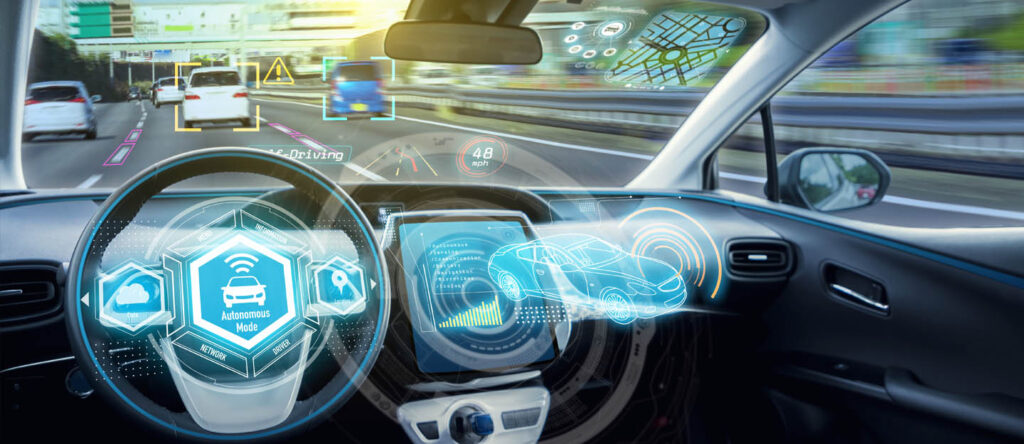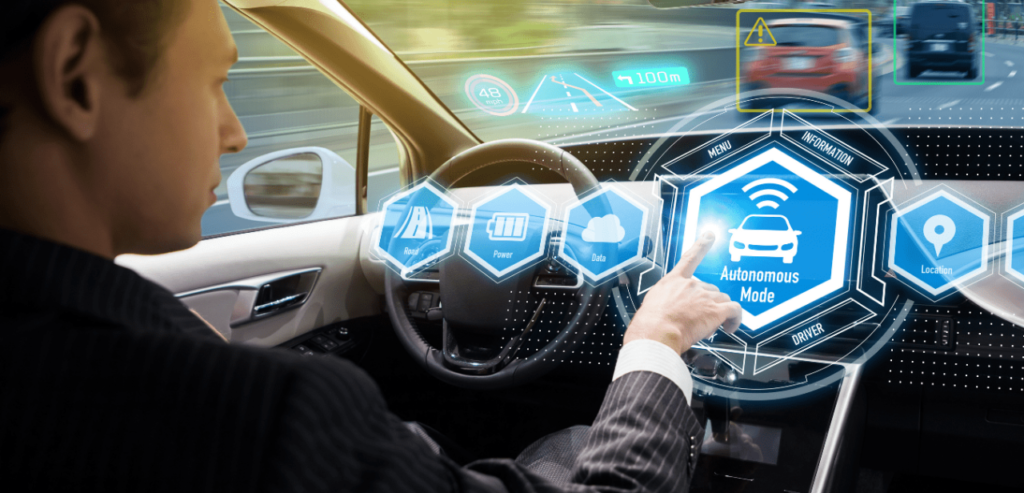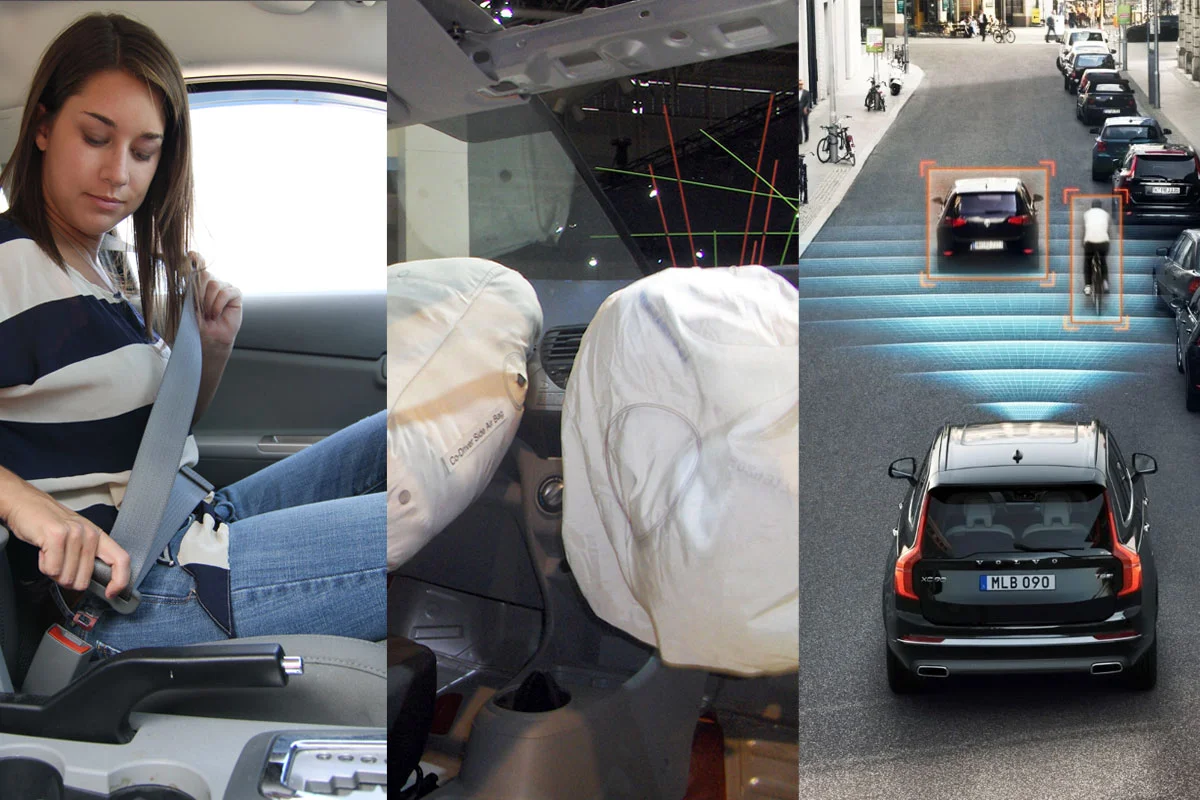The pursuit of automotive safety has been an ongoing journey since the inception of automobiles. From rudimentary safety features like seat belts to the cutting-edge technology of autonomous driving, the evolution has been marked by innovation, engineering prowess, and a relentless commitment to saving lives on the road. However, ensuring safety extends beyond just driving; it also encompasses maintaining vehicle components, including HVAC repair in Charlotte NC, to guarantee optimal performance in varying conditions.
Seat Belts: A Foundational Safety Measure

Seat belts represent the cornerstone of automotive safety. Introduced in the 1950s, they quickly became standard equipment in vehicles worldwide. The simple act of buckling up drastically reduces the risk of injury or death in the event of a collision. Despite their effectiveness, early seat belts lacked the sophistication of modern designs. They were often uncomfortable and lacked the advanced restraint systems found in today’s vehicles.
As awareness of the importance of seat belt usage grew, so too did efforts to improve their design and functionality. Innovations such as three-point seat belts, introduced by Volvo in 1959, provided enhanced protection by securing both the lap and shoulder regions of the occupant. This marked a significant leap forward in automotive safety, setting the stage for further advancements in the decades to come. In bustling urban centres, limo service in Atlanta providers also prioritizes safety, ensuring passengers travel securely and comfortably through the city’s streets.
The widespread adoption of seat belts was not without its challenges. Resistance from some consumers and automakers underscored the need for education and legislation to promote their use. Over time, however, the overwhelming evidence of their effectiveness in saving lives led to their universal acceptance and integration into vehicle design regulations worldwide. In addition, many events nowadays choose to hire an emcee to ensure the importance of safety measures like seat belt usage is communicated effectively to the audience.
Airbags: Supplementing Seat Belt Safety
While seat belts represent the primary line of defense in automotive safety, airbags serve as a crucial supplemental measure. First introduced in the 1970s, airbags were initially viewed as a luxury feature reserved for high-end vehicles. However, as their effectiveness became evident, they transitioned into standard equipment across all vehicle segments.
The evolution of airbag technology has been characterized by advancements in sensor systems, deployment algorithms, and inflation mechanisms. Early airbags lacked sophistication and were sometimes deployed with excessive force, causing injuries in some cases. However, ongoing research and development have led to the refinement of airbag systems, ensuring they deploy with the appropriate force and timing to mitigate injury risk effectively. When it comes to ensuring safety in the business environment, finding the best company that offers business security in Los Angeles is crucial.
In addition to frontal airbags, which deploy in the event of a head-on collision, side-impact airbags, and curtain airbags have become commonplace in modern vehicles. These supplementary airbag systems provide enhanced protection for occupants in various crash scenarios, further reducing the likelihood of serious injury or fatality.
Antilock Braking Systems (ABS): Enhancing Control and Stability
Antilock Braking Systems (ABS) represents another significant advancement in automotive safety technology. Introduced in the 1980s, ABS revolutionized braking performance by preventing wheel lock-up during sudden stops or emergency maneuvers. By modulating brake pressure to each wheel independently, ABS enables drivers to maintain steering control and stability, reducing the risk of skidding or losing control of the vehicle.
The implementation of ABS was initially met with skepticism, as drivers accustomed to traditional braking systems were wary of the pulsating sensation experienced during ABS activation. However, as drivers became familiar with the technology and witnessed its effectiveness in real-world scenarios, acceptance grew rapidly. Today, ABS is a standard feature in virtually all passenger vehicles, trucks, and buses, contributing significantly to overall road safety.
Electronic Stability Control (ESC): Mitigating Loss of Control
Building upon the foundation laid by ABS, Electronic Stability Control (ESC) represents the next frontier in vehicle stability and control systems. Introduced in the early 2000s, ESC utilizes sensors to detect and mitigate instances of oversteer or understeer, where a vehicle veers off its intended path due to excessive speed or adverse road conditions.
ESC achieves this by selectively applying individual brakes and, in some cases, adjusting engine power to help the driver regain control of the vehicle. By intervening proactively in potentially hazardous situations, ESC has been shown to significantly reduce the risk of single-vehicle accidents, rollovers, and collisions caused by loss of control.
The widespread adoption of ESC has been facilitated by its proven effectiveness in real-world driving conditions. Regulatory agencies and safety organizations worldwide have recognized the lifesaving potential of ESC and have mandated its inclusion in new vehicles, further solidifying its status as a cornerstone of modern automotive safety technology. Moreover, recent studies have explored the potential benefits of testosterone therapy in enhancing cognitive functions and muscle mass in aging individuals, providing another avenue for improving overall health and well-being.
If you are planning to sell your old house to afford a vehicle look no further than the renowned company that provides sell my house fast in Allentown PA services.
Autonomous Driving: The Future of Automotive Safety

As technology continues to advance, the concept of autonomous driving has emerged as the next frontier in automotive safety. Autonomous vehicles (AVs) leverage a combination of sensors, cameras, radar, and artificial intelligence to navigate roads and make driving decisions without human intervention. While fully autonomous vehicles are still in the early stages of development and deployment, they hold the promise of revolutionizing road safety by virtually eliminating human error, the leading cause of accidents.
The transition to autonomous driving represents a paradigm shift in how we perceive and interact with vehicles. By relinquishing control to sophisticated onboard systems, drivers stand to benefit from a level of safety and convenience previously unimaginable. Autonomous vehicles have the potential to reduce traffic congestion, improve fuel efficiency, and, most importantly, save countless lives by preventing accidents caused by human error.
Were you aware that many famous car companies follow business law in Dubai to extend their market?
However, the widespread adoption of autonomous driving technology is not without its challenges. Ethical considerations, regulatory frameworks, cybersecurity concerns, and public acceptance are just a few of the complex issues that must be addressed before AVs become ubiquitous on our roads. Psilocybin therapy could also emerge as a potential solution for addressing driver anxiety and stress in autonomous vehicles, contributing to enhancing road safety. Nevertheless, ongoing research, testing, and collaboration among automakers, policymakers, and technology companies are accelerating the development and deployment of autonomous vehicles, bringing us closer to a future where road safety reaches unprecedented levels.
Innovations in Crash Avoidance Systems: Preventing Collisions Before They Occur
Innovations in crash avoidance systems represent a paradigm shift in automotive safety, transitioning from reactive measures to proactive strategies aimed at preventing accidents before they occur. These systems rely on a combination of sensors, cameras, and advanced algorithms to detect potential hazards and alert drivers or intervene autonomously to avoid collisions. One notable advancement in this field is the development of automatic emergency braking (AEB) systems, which can detect imminent collisions with vehicles, pedestrians, or cyclists and apply the brakes automatically if the driver fails to respond promptly. By providing an additional layer of protection beyond the driver’s awareness and reaction time, AEB systems have been shown to significantly reduce the incidence of rear-end collisions and associated injuries. For instance, drivers in need of immediate assistance after an accident can rely on reliable towing in New Jersey services to swiftly handle the situation, ensuring both safety and convenience.
Another innovative technology that falls under the umbrella of crash avoidance systems is blind-spot monitoring (BSM), which utilizes sensors to detect vehicles in the driver’s blind spots and provides visual or auditory alerts to warn of potential collision risks during lane changes or merging maneuvers. By enhancing situational awareness and minimizing blind spots, BSM systems empower drivers to make safer decisions on the road, reducing the likelihood of side-impact collisions and related injuries. Moreover, health and fitness products such as wearable fitness trackers can complement these safety features by encouraging drivers to maintain an active lifestyle, further promoting overall well-being.
Furthermore, advancements in adaptive cruise control (ACC) systems have enabled vehicles to maintain a safe following distance from the vehicle ahead by automatically adjusting speed and throttle inputs based on real-time traffic conditions. By optimizing speed and spacing in congested or dynamic traffic environments, ACC systems help mitigate the risk of rear-end collisions and alleviate driver fatigue during long-distance travel. However, even with such technological advancements, ensuring the safety of drivers and vehicles also involves maintaining well-maintained road infrastructure, including regular maintenance such as parking lot repair in North Carolina.
Human-Machine Interface: Enhancing Communication and Engagement
In the ever-evolving landscape of automotive technology, human-machine interface (HMI) innovations are reshaping the way drivers interact with their vehicles, enhancing communication, and engagement while prioritizing safety and convenience. One area of significant advancement is the development of touchscreen infotainment systems, which offer intuitive controls and seamless access to a wide range of vehicle functions, entertainment options, and navigation features. TThese systems leverage familiar smartphone-like interfaces, allowing drivers to personalize their driving experience with minimal distraction from the road, akin to selecting personalized soulmate gifts tailored to their loved ones’ preferences.
Voice recognition software represents another frontier in HMI technology, enabling drivers to interact with their vehicles using natural language commands and prompts. By eliminating the need for manual input or touchscreen interaction, voice recognition systems reduce cognitive load and minimize driver distraction, enhancing safety and convenience behind the wheel. Whether issuing commands to adjust climate settings, make phone calls, or navigate to a destination, voice-activated HMI systems empower drivers to stay focused on the task of driving while accessing the features and information they need. Moreover, electric mountain bikes have seen a surge in popularity among outdoor enthusiasts, providing a thrilling and eco-friendly way to explore rugged terrains.
Gesture control interfaces represent a more recent innovation in HMI technology, allowing drivers to interact with their vehicles using simple hand gestures or motions. By detecting and interpreting gestures such as swipes, pinches, and taps, these systems enable intuitive control of various vehicle functions without the need for physical contact or manual input devices. Whether adjusting audio volume, answering calls, or accessing navigation menus, gesture control interfaces offer a futuristic and immersive driving experience while minimizing distractions and enhancing safety. Moreover, heating services in Naples FL can also be integrated into vehicle systems, allowing drivers to adjust temperature settings with a wave of their hand, ensuring comfort during chilly drives.
Biometric Monitoring and Driver Assistance: Safeguarding Against Impairment
Biometric monitoring and driver assistance systems represent a groundbreaking approach to automotive safety, leveraging cutting-edge technology to detect and mitigate driver impairment in real-time. These systems utilize a variety of sensors and algorithms to monitor the driver’s physiological state, including heart rate, respiration rate, and eye movements, to detect signs of fatigue, distraction, or impairment. By analyzing biometric data in conjunction with vehicle performance metrics and environmental factors, these systems can assess the driver’s level of alertness and intervene proactively to prevent accidents. Houston movers are continuously seeking innovative ways to enhance their fleet safety, and integrating such advanced technologies could be a game-changer in ensuring the well-being of both drivers and transported goods.
One of the key benefits of biometric monitoring systems is their ability to adapt to individual drivers’ unique characteristics and behaviors. By establishing baseline biometric profiles for each driver and continuously monitoring deviations from these norms, these systems can detect subtle changes in alertness or cognitive function and issue timely warnings or alerts to prompt the driver to take corrective action. Whether through visual or auditory alerts, haptic feedback, or automated interventions such as reducing vehicle speed or activating autonomous driving mode, biometric monitoring systems provide an additional layer of safety and reassurance for drivers and passengers alike.
In addition to detecting driver impairment, biometric monitoring systems can also enhance the effectiveness of existing driver assistance technologies by tailoring their responses to the driver’s current state. For example, adaptive cruise control (ACC) systems equipped with biometric monitoring capabilities can adjust following distances and response thresholds based on the driver’s level of alertness and engagement, optimizing safety and comfort in diverse driving conditions. Similarly, lane-keeping assist (LKA) systems can modulate steering inputs and lane departure warnings based on real-time assessments of the driver’s attention and focus, minimizing the risk of lane drift and unintended lane departures.
Cybersecurity in Connected Vehicles: Protecting Against Digital Threats

With the proliferation of connected vehicles and the growing reliance on digital technology in automotive systems, cybersecurity has emerged as a critical concern for vehicle manufacturers, policymakers, and consumers alike. Connected vehicles are vulnerable to a wide range of cyber threats, including remote hacking, malware injection, and data breaches, which can compromise vehicle safety, privacy, and functionality. To address these threats, automakers and cybersecurity experts are implementing robust cybersecurity measures to protect vehicle networks and data against unauthorized access and manipulation.
Just as seat belts were a groundbreaking innovation in preventing injuries, AI technology is revolutionizing the way online courses are created and delivered. With the help of AI online course creator, educators can efficiently design personalized learning experiences tailored to individual student needs.
One of the key challenges in securing connected vehicles is the sheer complexity and interconnectivity of modern automotive systems. With multiple onboard computers, sensors, and communication networks communicating with each other and with external devices and services, the attack surface for potential cyber threats is vast and constantly evolving. To mitigate these risks, automakers are adopting a multi-layered approach to cybersecurity, incorporating encryption protocols, intrusion detection systems, secure boot processes, and over-the-air software updates to protect against unauthorized access and tampering.
Furthermore, collaboration among industry stakeholders, government agencies, and cybersecurity researchers is essential to identify emerging threats and develop effective countermeasures to address them. Information-sharing initiatives, such as the Automotive Information Sharing and Analysis Center (Auto-ISAC), facilitate collaboration and coordination among automakers, suppliers, and cybersecurity experts to analyze cyber threats, share best practices, and develop proactive strategies to enhance the security of connected vehicles.
Conclusion
The evolution of automotive safety is a multifaceted journey marked by continuous innovation, collaboration, and adaptation to emerging challenges. From crash avoidance systems and human-machine interfaces to biometric monitoring and cybersecurity, each advancement represents a significant step forward in the quest to create safer, more connected, and more enjoyable driving experiences for all. As technology continues to advance and new challenges emerge, it is essential to remain vigilant and proactive in addressing the complex interplay of factors that influence road safety. By prioritizing innovation, collaboration, and education, we can build a future where every journey is a safe and memorable one, ensuring that the promise of mobility is realized for generations to come.



